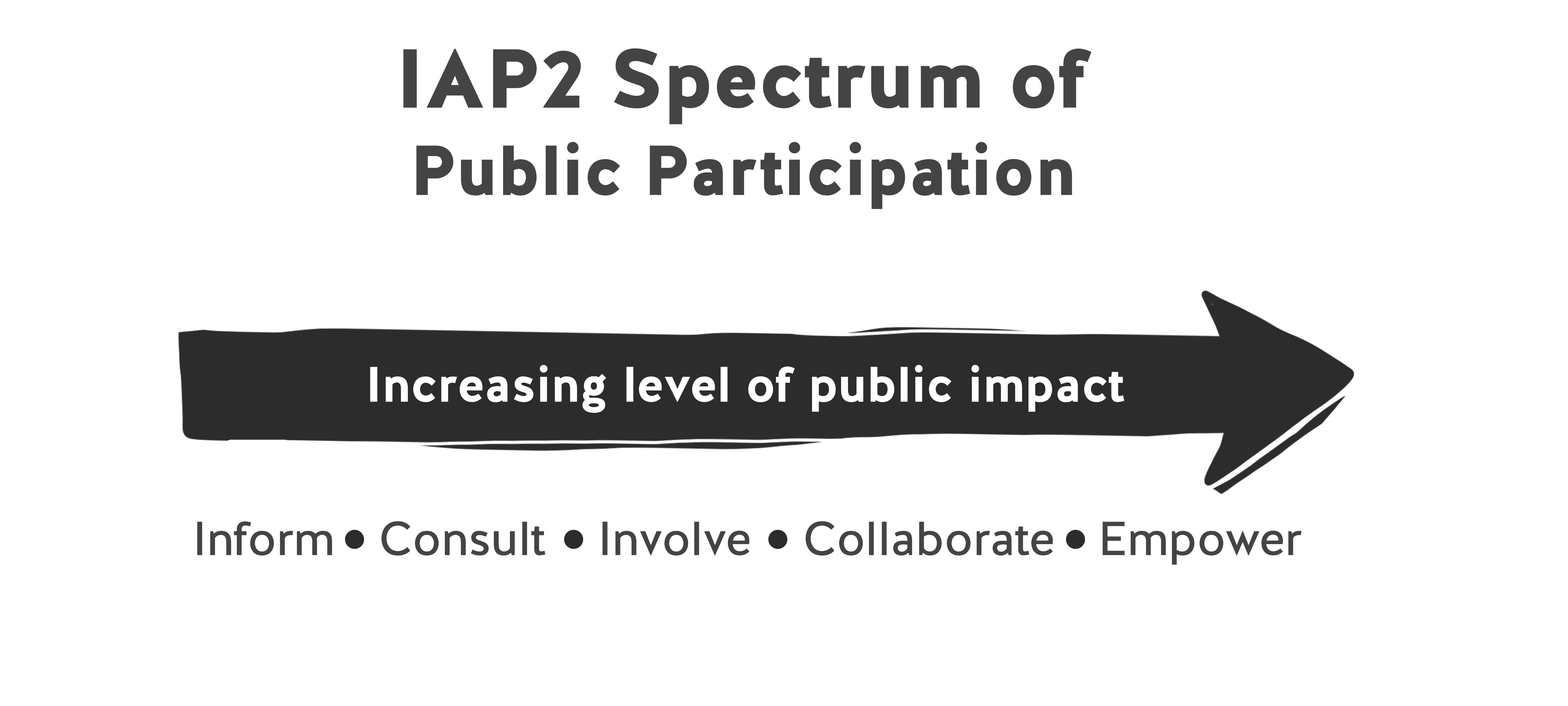There are powerful conceptual models of public engagement that currently exist. For example, the International Association of Public Participation’s (IAP2) identifies five stages of public impact. From informing the public to empowering the public, the model’s thematic spectrum suggests a continuum of strategies with increasing returns on impact. Though this may offer useful ways of thinking about the work of government, the main limitation of this particular model is its linearity.

Public engagement processes do not typically land on one point within the spectrum. Any given strategy can inform and empower at the same time. For example, a town hall meeting that appropriately emphasizes translation and accessibility is informing and consultative, and if people are able to take a leadership role in generating action steps, then it is also collaborative and potentially empowering. Or consider a Facebook campaign on affordable housing started by a local community. The City, in this case, is the one that needs to be informed, and through deep listening it can also effectively empower those involved by giving them authority in related decision-making processes. Co-production is multi-directional and multi-dimensional. And each of the five categories of the IAP2 spectrum should be considered as individually powerful and simultaneously possible. Using co-production as a frame for the spectrum allows for a focus on outcomes as well as process. Especially with online engagements, what appears only informative can easily be shared, spread, amplified, and ultimately made empowering.
The co-production frame also demonstrates that any discrete action taken by a government body is part of a larger civic effort. If the goal of public engagement is increased use of health services, for example, there might be several steps required to achieve the goal, including: 1) informing the public about existing services, 2) getting input into future services, and 3) designing tools that make access to services easier. Each of these pieces needs to be considered separately, factoring in who will be impacted by each stage, and then designed appropriately. Altogether, the distinct pieces are interrelated and chosen to achieve the overarching goal. If new housing policy is needed, a similar set of steps should be employed toward achieving a broader long-term goal. The above highlights yet another limitation with the linear and segmented IAP2 framework - a typical town hall meeting might be considered mere consultation, even though informing is a necessary step towards input and design. The co-production frame makes the following claim: “together, we will make good policy.” Or, “together, we will implement quality services.” With a mind towards outcomes, co-production goals should be established at the start of a project and systematically addressed throughout all distinct steps or pieces.

When government policies and programs are co-produced with citizens, they are more sustainable and promote a broader understanding of related issues. When people feel a sense of ownership, they are more likely to also feel a sense of commitment and responsibility. Creating conditions for quality co-production, then, is essential infrastructure to good governance. Daniel Atzmon from the City of Baltimore emphasized this point: “[Public engagement] is just as vital as picking up the trash, filtering the water, and keeping traffic lights running. The public residents are our key stakeholders, and if we don’t take into account their complaints—a) my bosses would all get voted out of office, and b) we wouldn’t be responsive to the needs of a community... So not only do we need to keep them happy and work as partners as the ultimate “boss” if you will, but they are a key source of information we need to do our jobs well.”
Things to Keep in Mind
- Co-production includes a symmetrical relationship of power between citizens and decision-makers, where citizen input dictates or guides public engagement project outcomes.
- The depth of an individual’s participation can fluctuate throughout an engagement process.
- Public engagement takes place on many different, and sometimes simultaneous, levels--from the exchange of information to in depth citizen engagement on service delivery and project operations.
